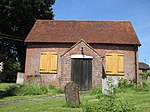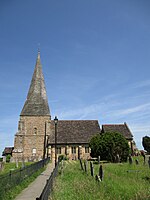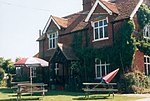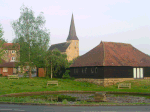Coppedhall Hanger
Forests and woodlands of West SussexGeological Conservation Review sitesSites of Special Scientific Interest in West Sussex

Coppedhall Hanger is a 0.6-hectare (1.5-acre) geological Site of Special Scientific Interest north of Billingshurst in West Sussex. It is a Geological Conservation Review site.A stream runs through this site and it exposes a layer of sand, silt and jet from the Lower Weald Clay around 130 million years ago. The sand contains fragments of detritus dating to the 280 million year old Cornubian batholith.This site is a steeply sloping area of grassland, scrub and woodland. There is access from a public footpath which runs close to the southern end.
Excerpt from the Wikipedia article Coppedhall Hanger (License: CC BY-SA 3.0, Authors, Images).Coppedhall Hanger
Rowner Road,
Geographical coordinates (GPS) Address Nearby Places Show on map
Geographical coordinates (GPS)
| Latitude | Longitude |
|---|---|
| N 51.038 ° | E -0.464 ° |
Address
Rowner Road
Rowner Road
RH14 9HT , Billingshurst
England, United Kingdom
Open on Google Maps









